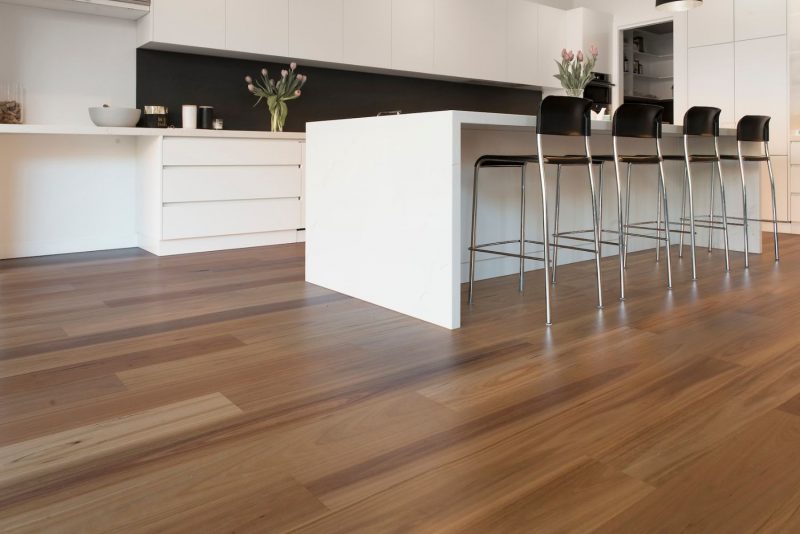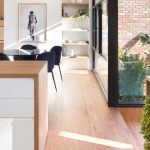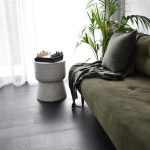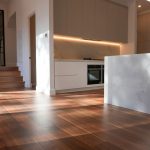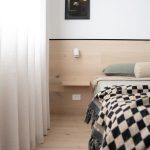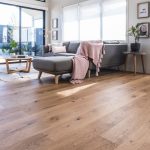Timber flooring remains one of the most sought-after finishes in Australian homes thanks to its warmth, beauty, and timeless appeal. But in busy environments, such as hallways, living rooms, open-plan spaces and entrances, the wrong choice of timber can quickly reveal wear, scuffing, and traffic patterns.
Understanding how species hardness, finish type, and colour interact with daily use is essential for selecting a floor that maintains its appearance over time.
Timber Species – Hardness, Density & Natural Resistance
A timber’s hardness, measured by the Janka rating, is the most reliable indicator of how well it will resist dents, compression, and general wear. Harder timbers cope better with foot traffic, pets, furniture movement and the fine abrasive particles brought in from outside.
Australian hardwoods generally lead the pack in durability. Grey Ironbark, for example, is one of the hardest flooring options available, with exceptional density and resilience that make it ideal for homes with heavy foot traffic or for light commercial use. Its strong grain pattern also helps disguise minor marks, though its naturally darker tones may reveal dust more readily.
Tallowwood and Spotted Gum offer similarly impressive durability. Tallowwood’s natural oils give it a slightly self-lubricating surface that resists scuffing, while Spotted Gum’s distinctive colour variation and interlocking grain tend to conceal wear exceptionally well. Blackbutt is another strong performer: hard enough for most high-traffic homes and lighter in appearance, making dust and fine scratches far less noticeable.

On the softer end of the spectrum sits European Oak. Although it is not as hard as Australia’s native species, it compensates through aesthetic versatility and surface treatments. When finished with a quality matte or wire-brushed coating, common across Embelton’s European Oak range, the timber hides superficial wear impressively well and offers consistently stable performance over time.
Tasmanian Oak, by comparison, is more susceptible to indentations and wear marks. While its lighter tones help conceal scratches, it is best suited to lower-traffic homes or households where shoes are routinely removed.
Finish Types – What’s on the Surface Matters
While species hardness determines how well a floor withstands dents, the finish is what dictates how visible daily scuffs and marks will be.

Matte finishes are the most forgiving, diffusing reflected light so that scratches and heel scuffs blend into the grain instead of standing out. This is especially true for wire-brushed matte floors, where the subtle surface texture naturally masks wear and provides excellent slip resistance, an advantage for busy family homes.
Smooth matte or satin coatings offer a happy medium: less reflective than gloss but not as textured as brushed finishes. Homeowners who prefer a more contemporary, streamlined aesthetic often gravitate toward this style.
Gloss finishes, while elegant in formal spaces, are the least practical for high-traffic areas. Their reflective surface highlights everything, footprints, pet scratches, and even the faintest abrasion, making them difficult to maintain in everyday living environments.

Colour & Variation – How Appearance Influences Perceived Wear
Colour doesn’t change how a floor performs structurally, but it heavily influences how visible wear becomes. Lighter floors are generally the most forgiving, hiding dust, small scratches, and everyday traffic patterns with ease. They brighten interior spaces and especially complement busy households with pets.

Mid-tone timbers such as Spotted Gum or Tallowwood strike a good balance. Their natural variation helps mask imperfections while still offering a sense of depth and richness.
Darker floors, although visually dramatic and luxurious, tend to reveal dust and scuffs more readily. Surface scratches appear lighter against dark stains, making them more noticeable in high-traffic zones.

What This Means for Real Homes
For homeowners wanting a timber floor that stays beautiful with minimal maintenance, the ideal combination usually includes a hard species, a matte or wire-brushed finish, and light to mid-tone colouring. This trio works together to reduce the visibility of everyday wear and extend the floor’s visual lifespan.
European Oak, despite being softer, remains a top performer when finished in a textured matte surface, offering excellent “visual durability”. Meanwhile, Australian hardwoods like Spotted Gum, Grey Ironbark, Blackbutt and Tallowwood deliver outstanding long-term resistance to traffic and indentation.

Practical Tips for Longevity
Even the hardest floors benefit from a little protection. Rug runners in entryways and hallways, felt pads under furniture, and regular sweeping help preserve the timber’s finish and prevent premature wear. With the right species, finish, and colour selection, homeowners can enjoy the beauty of timber flooring without sacrificing durability, even in the busiest areas of the home.
Visit Embelton Flooring today to start your timber flooring journey with three free samples.

